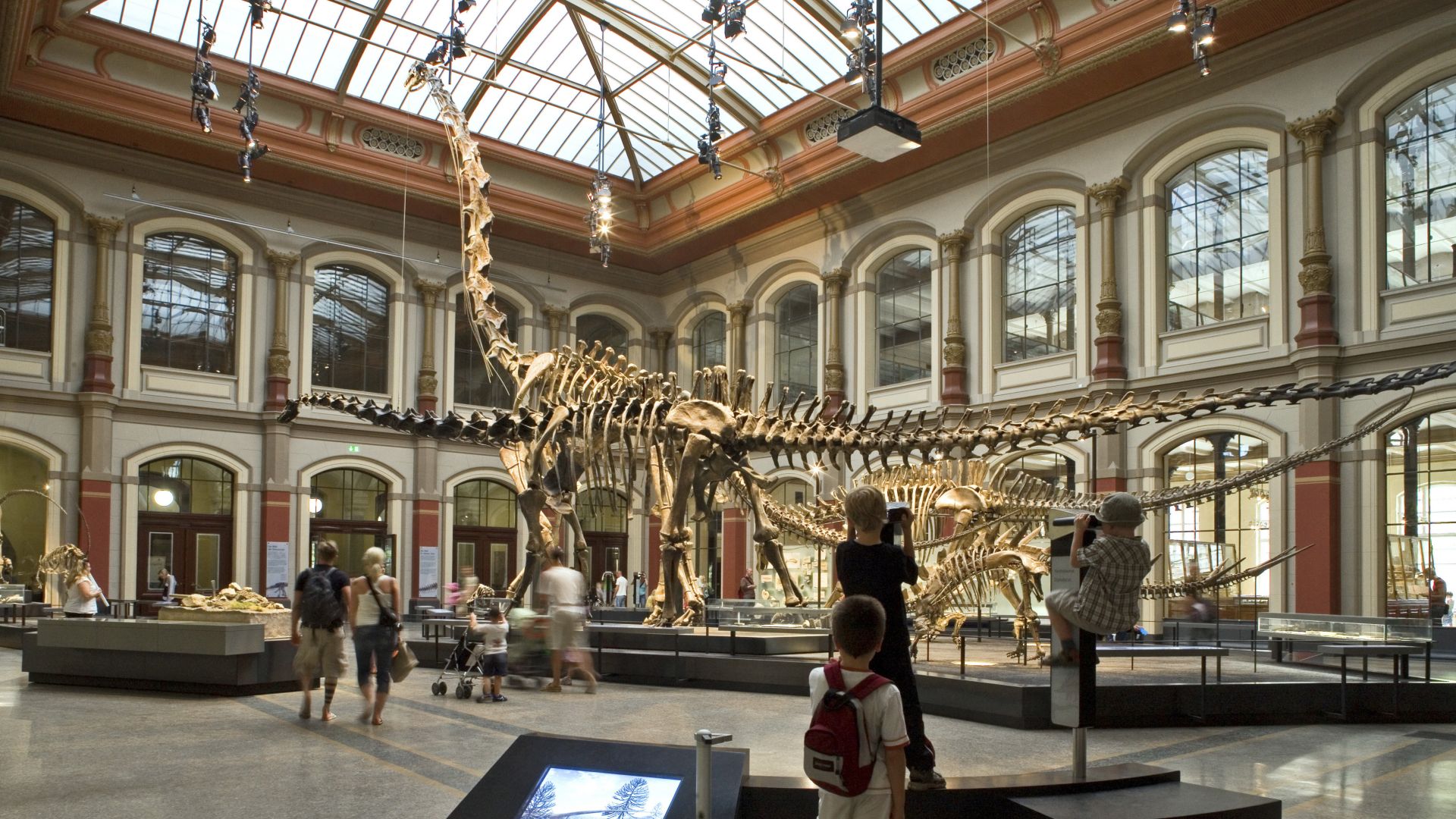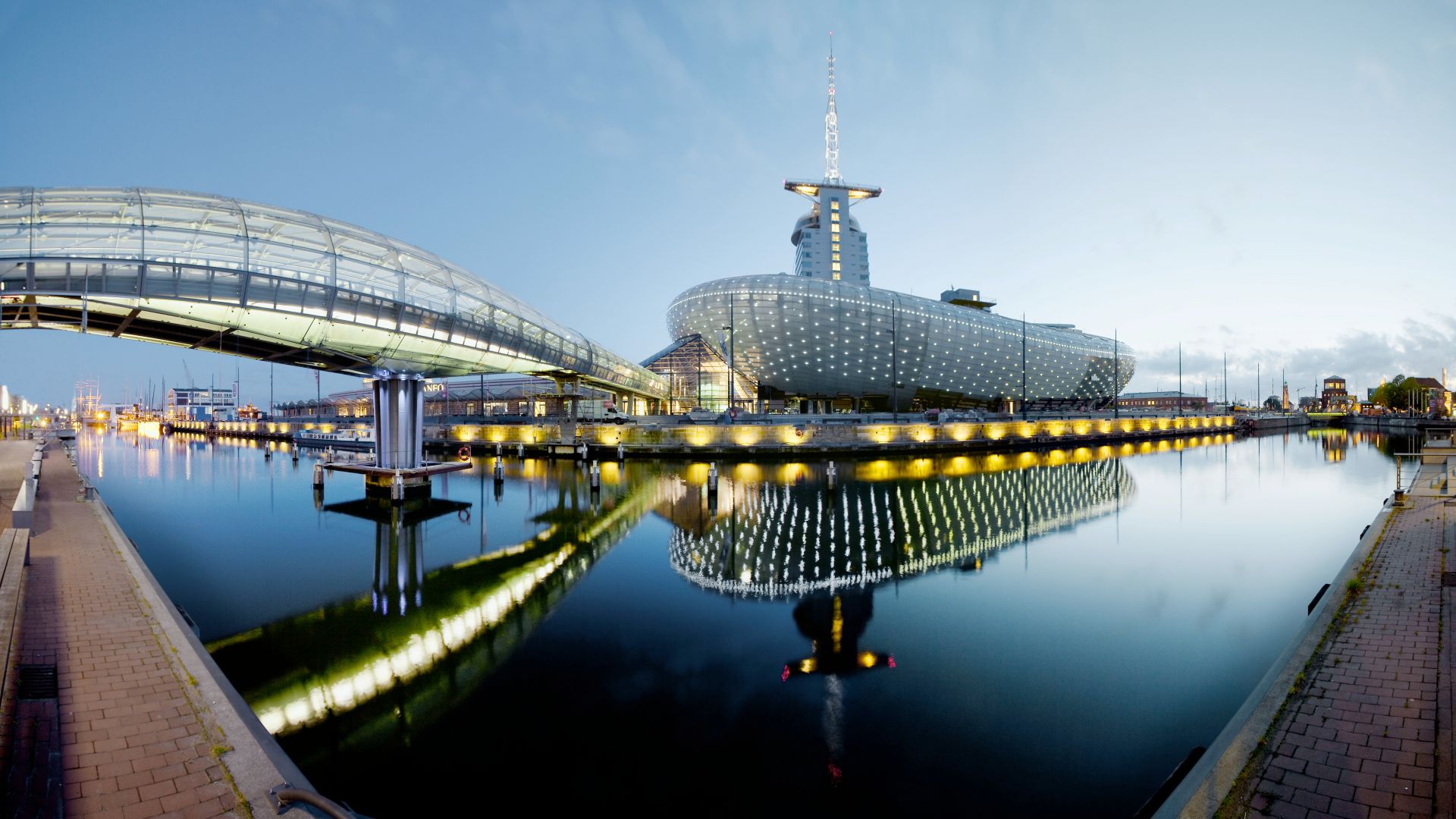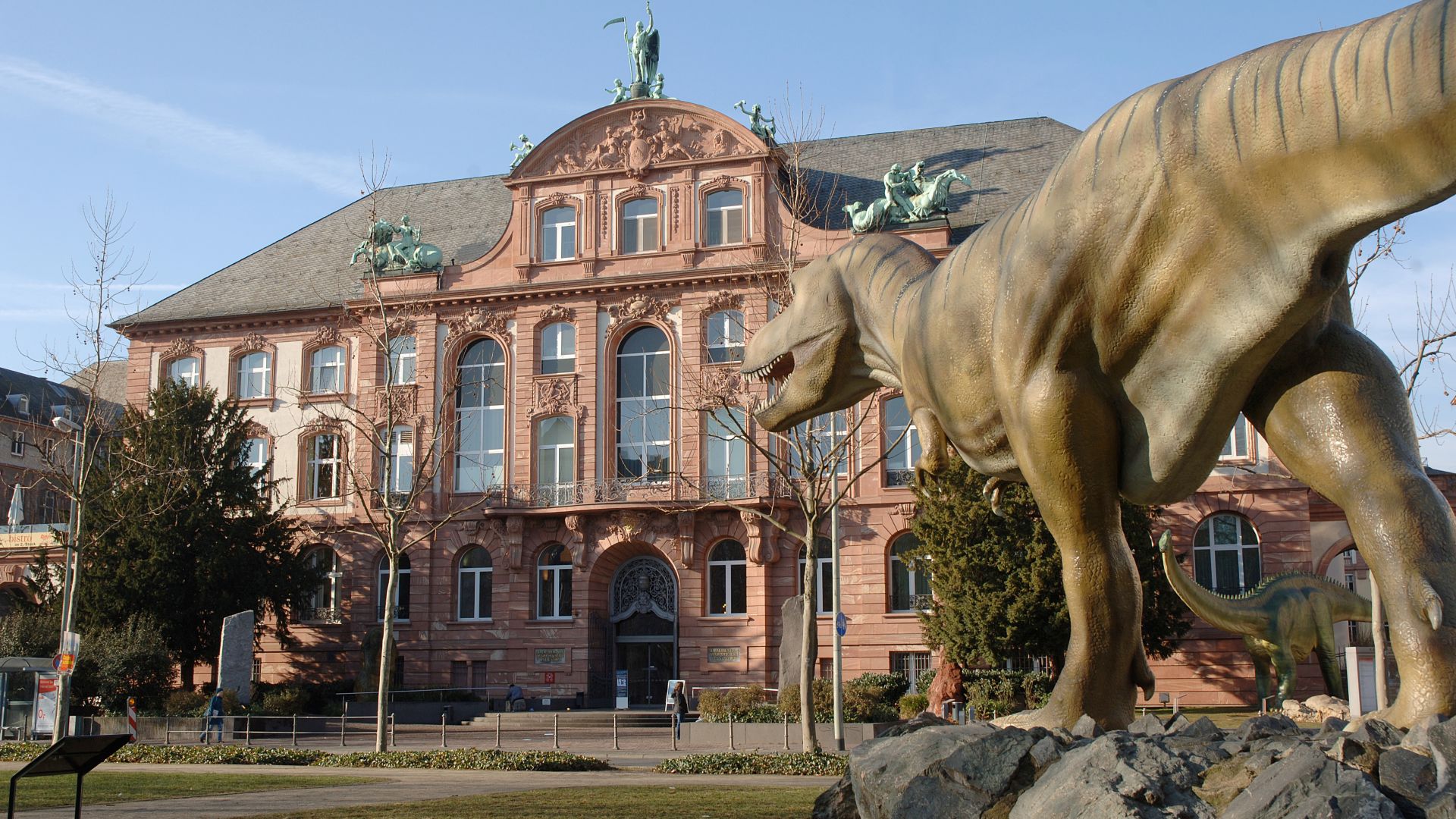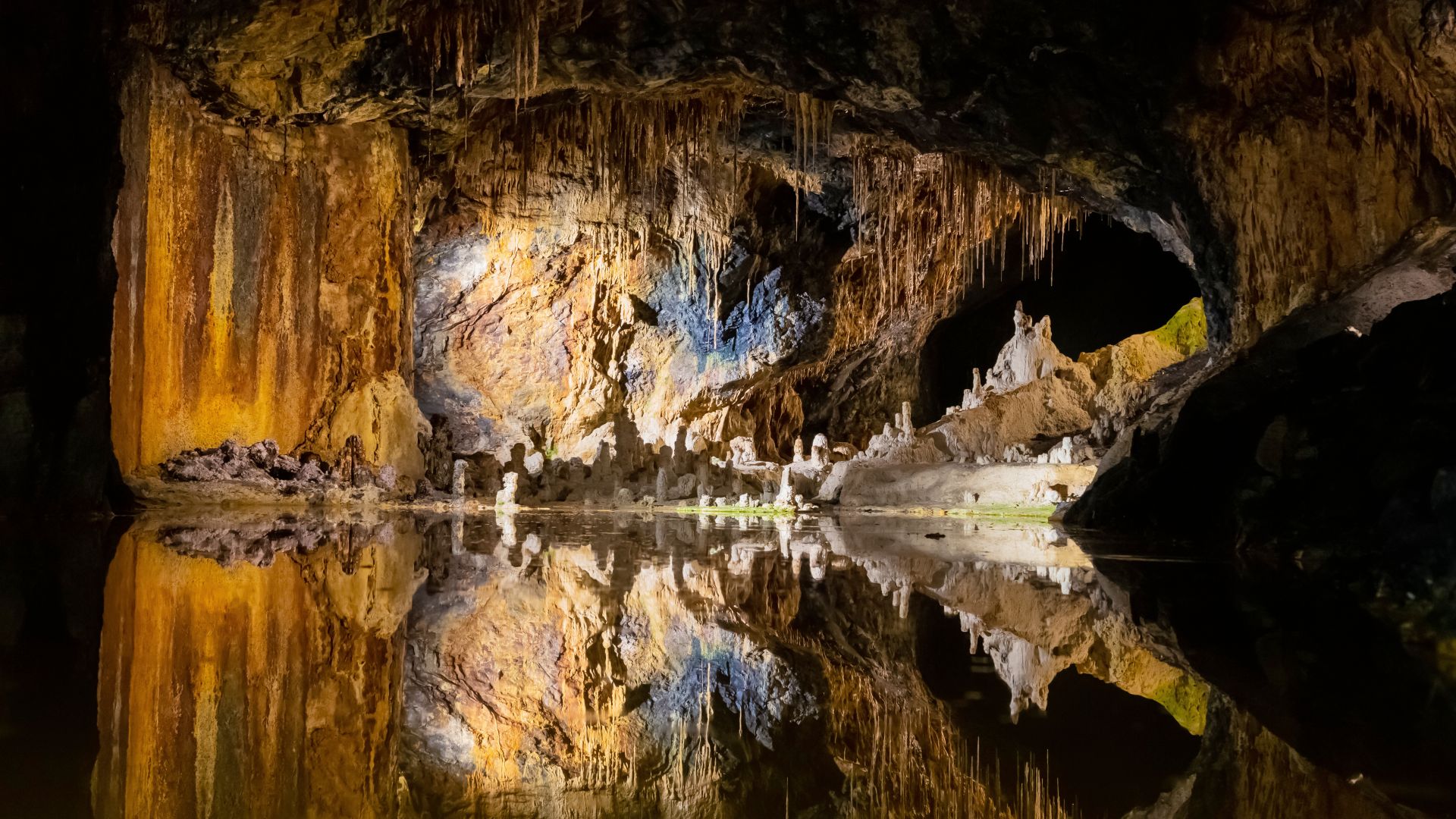Cities & Culture
Natural History Museums: Captivating the Wonders of Nature
Natural history museums fascinate young and old visitors alike. Some boast massive dinosaur skeletons, while others enjoy extensive collections of animals, minerals, or plants." The exhibitions, often housed in historical buildings, make use of modern presentation methods.
Museum für Naturkunde (Natural History Museum) Berlin: evolution in action
 Berlin: Dinosaur Hall in the Atrium of the Museum of Natural History of Humboldt University
©Lookphotos (Karl Johaentges)
Berlin: Dinosaur Hall in the Atrium of the Museum of Natural History of Humboldt University
©Lookphotos (Karl Johaentges)
Tristan Otto was the superstar of the Berlin museum scene for many years. And it’s no wonder, since Tristan is the first original skeleton of a Tyrannosaurus Rex to be exhibited in Europe. After a guest appearance in Copenhagen, the twelve-metre-long and four-metre-tallpredator is scheduled to return in 2023 - and keep other dinosaurs company, including the world’s largest displayed dinosaur skeleton, a over 13-meter-long Giraffatitan brancai. Through 'Juraskopes,' the prehistoric giants come to life: When looking through one of the interactive binoculars, muscles and skin grow on the giant reptiles, they start eating and hunting. The animation is accompanied by a matching soundscape. Some people might be relieved to hear there are also more harmless species among the 30 million museum exhibits, such as the archaeopteryx, a prehistoric bird. Speaking of birds - nearly 90% of the bird species currently in existence are gathered in one of the oldest and most important natural history museums on the continent, with 7,000 specimens mounted on stands alone. Despite upgrades to the building (in 2010, the east wing was reopened as a modern concrete building with historic façade relief), many pieces date back to the 18th and 19th centuries, when explorers such as Humboldt travelled all around the world, bringing back abundant natural treasures.
Klimahaus Bremerhaven: a world tour at express speeds
 Bremerhaven: Klimahaus Bremerhaven 8° East with glass bridge
©marcus.meyer@fotoetage.de (Marcus Meyer)
Bremerhaven: Klimahaus Bremerhaven 8° East with glass bridge
©marcus.meyer@fotoetage.de (Marcus Meyer)
The climate, and climate change, are the words on everyone’s lips. In 2009, Klimahaus Bremerhaven opened, with its impressive 125-metre-long, futuristic glass outer shell, where visitors can experience the changing planet up close. Visitors experience different climate zones quite literally, including a temperature difference of 48 degrees Celsius, through a journey along the eighth meridian east. In rapid succession, the journey takes you from the Bremerhaven port to the refreshing coolness of a Swiss alpine meadow, the scorching heat of the Sahel zone, and all the way to the icy cold of Antarctica. The locations are meticulously staged with elaborate setups, films, and theater sets, creating a captivating experience. For instance, at the Cameroon travel station, visitors are enveloped in exotic scents and sounds, while at Samoa, a warm tropical rain falls. Things get more serious in the interactive exhibition 'Perspectives' and in the 'World Future Lab,' which with its eight play stations is especially aimed at fostering climate awareness among young people. The bottom line? The highlight of the Havenwelten district is exceptional both in content and architecture, and has rightfully been repeatedly recognized by UNESCO as a learning site of the highest category.
Senckenberg Natural History Museum, Frankfurt: dinosaurs and other giants
 Frankfurt: Senckenberg Nature Museum
©Senckenberg (Tränkner)
Frankfurt: Senckenberg Nature Museum
©Senckenberg (Tränkner)
Fans of extinct giant lizards and their relatives are sure to love Frankfurt’s Bockenheim district. After all, the Senckenberg Natural History Museum is home to Germany’s most extensive dinosaur exhibition, alongside thousands of exhibits in the fields of geology, palaeontology, and zoology (including a uniquely preserved dodo and a replica of the famous pre-human skeleton 'Lucy') Even before you enter, a Tyrannosaurus Rex in the entrance hints at the great things that can be expected inside, in the museum’s spacious and artistically designed interiors. Among other exhibits, you can see the skeleton of a long-necked diplodocus, the original of a fossilised dinosaur with preserved scaly skin, the reconstruction of a Triceratops skeleton, and other giant lizards. The museum is over 200 years old, and its 6,000 square metres of exhibition space include the permanent exhibitions “Whales and Elephants”, “Deep Sea”, and “Insects”. “Coral Reef”, which opened in 2021, is particularly exciting for families with children for other reasons. Here’s a clue: flashlight tours in the night-time museum, and interactive displays. At some exhibits, you can trigger a volcanic eruption with the push of a button to understand the evolutionary history – and thanks to virtual reality glasses bringing the animals to life, there's also a sense of wonder.
Saalfeld Fairy Grottoes with Grottoneum Adventure Museum: Magical Caves
 Saalfeld: Märchenhafte Feengrotte
©Adobe Stock (Vermeulen-Perdaen)
Saalfeld: Märchenhafte Feengrotte
©Adobe Stock (Vermeulen-Perdaen)
“Everything is just so colourful down here,” visitors to this disused Thuringian mine might think to themselves. The Guinness Book of World Records even awarded it the title of the 'most colorful show cave in the world'. About 30, sometimes quite rare, minerals are responsible for the colorful and spectacular display, enhanced with audio and light effects. These are found in the water there, dripping down and emerging from springs, and remain as a result of constant evaporation. The air here is also quite something: since 1937, when one of the first therapeutic caves of this kind was established, tens of thousands of patients have experienced relief or even healing from respiratory diseases. But there’s another group of visitors who certainly not sick - or at most, lovesick. Couples who can exchange their vows in the 'Fairytale Cathedral'. The fairy world on the hill above the grottoes is also designed as a magical fairytale. Winged entertainers, audio stations and various playground equipment radiate an enchanting atmosphere there. Guests can also explore from a more down-to-earth perspective in the Grottoneum Adventure World, which opened in 2011. At exciting interactive and educational stations, they can find out how light used to be ignited in the mine, how molecules dance and how constant dripping builds stone.